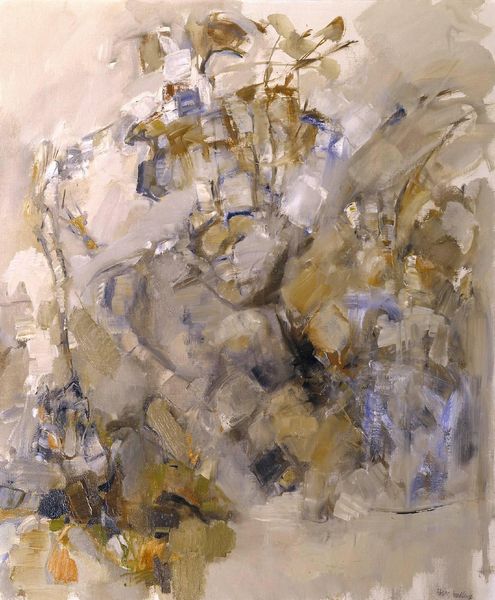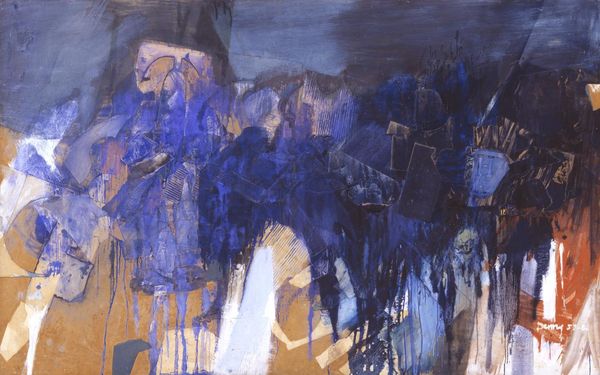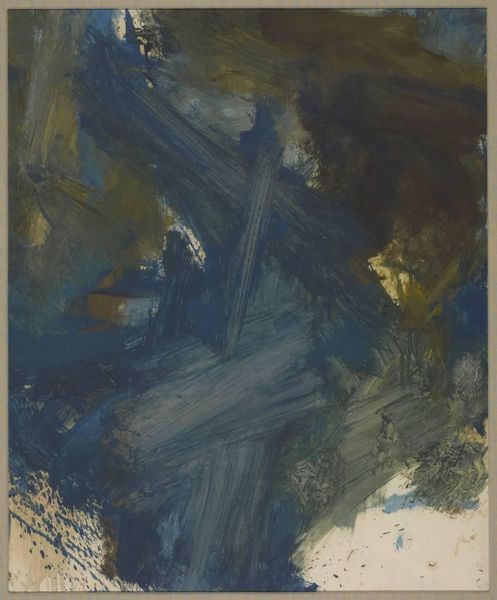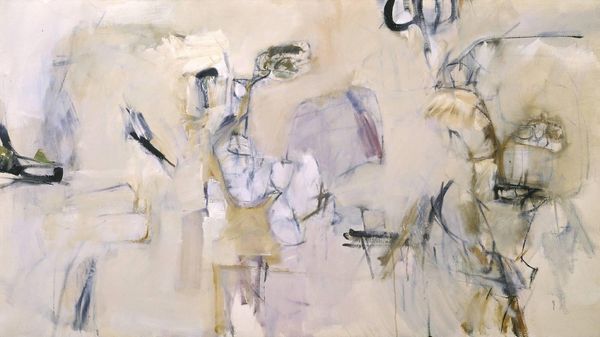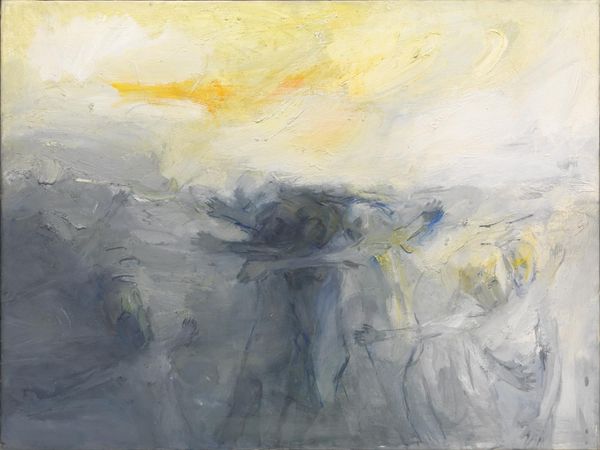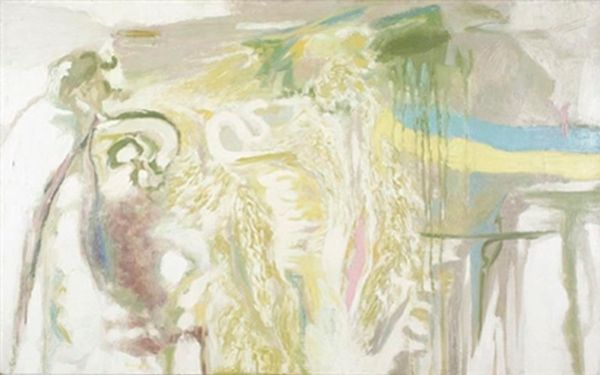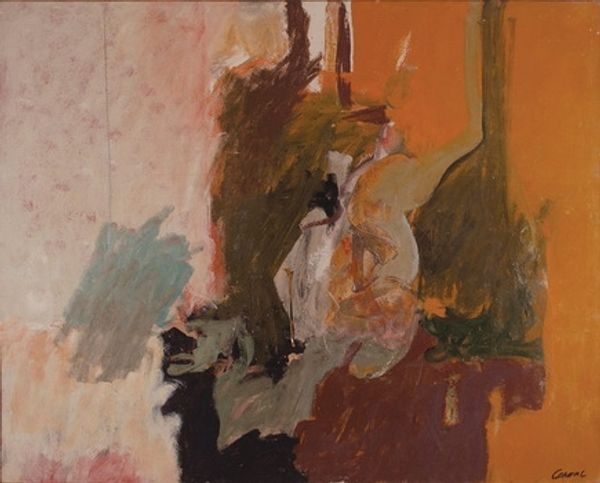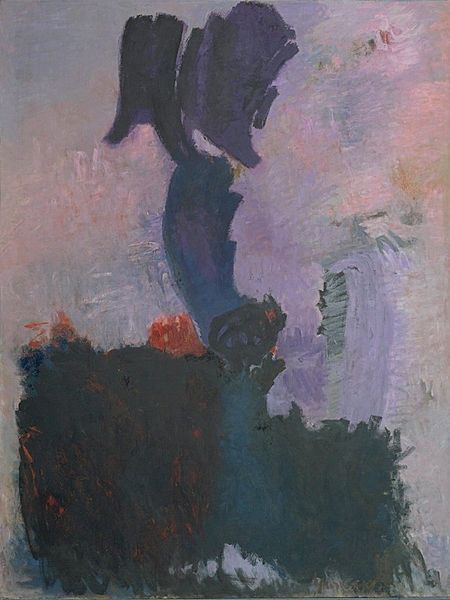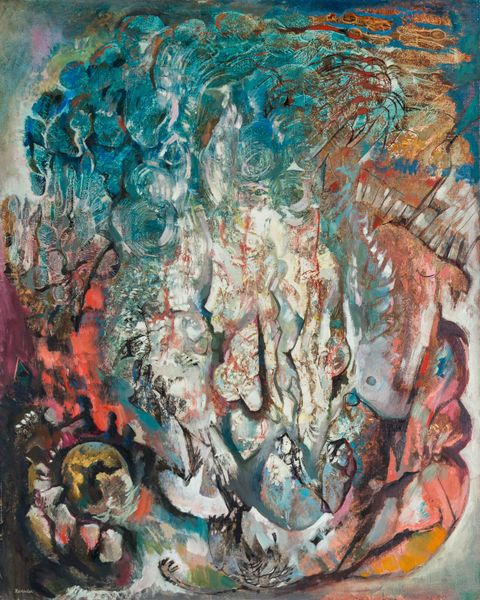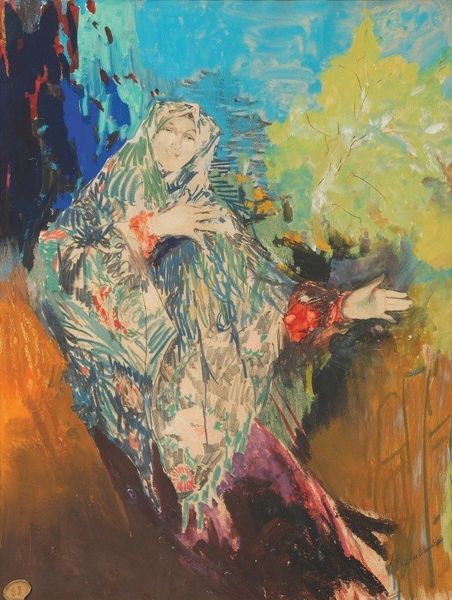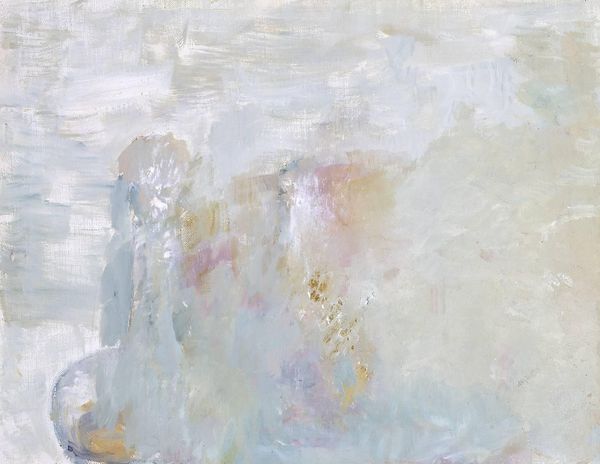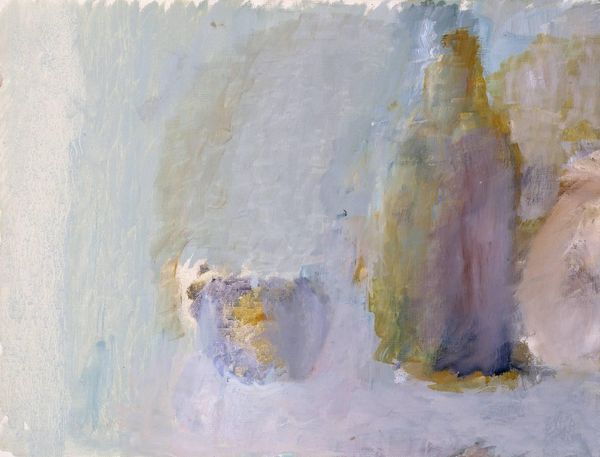
Dimensions: support: 1020 x 816 mm
Copyright: © The estate of Robert Medley | CC-BY-NC-ND 4.0 DEED, Photo: Tate
Curator: Robert Medley, born in 1905, created this painting called A Crucifixion. It’s a fairly large work, over a meter tall, and currently held in the Tate Collections. Editor: It's immediately striking how ethereal this feels. The muted palette and indistinct forms create a sense of sorrow and suffering, but also of something beyond the earthly. Curator: The crucifixion, of course, is laden with symbolism. It represents sacrifice, redemption, but also the brutal realities of power and oppression. Medley seems to be reaching for something timeless in this depiction. Editor: Absolutely, but I also see a challenge to traditional depictions. The figures are almost ghost-like, which, to me, hints at the questioning of faith that marked much of the 20th century. The suffering feels universal, not just religious. Curator: It reminds us of the enduring power of symbols to evolve, retaining core meanings while adapting to reflect contemporary concerns. It invites viewers to engage with deeply embedded cultural narratives. Editor: Exactly. Medley offers us not just a religious image but an exploration of human experience framed by historical and social realities. It's a potent visual statement.
Comments
Join the conversation
Join millions of artists and users on Artera today and experience the ultimate creative platform.
tate 6 months ago
⋮
Around the age of eighty Medley began a series of paintings which focused on groups of naked or semi-naked male bodies, painted in a subdued palette of silvery, greeny colours. These late works were inspired by the twin forces of old age and war. This painting began as a composition in which semi-naked men were exercising in a gymnasium, and the figure at the top was inspired by a diver jumping on a springboard. Friends, seeing the work in progress, commented on how this figure reminded them of a crucified person and Medley then took up this theme. It is not the Crucifixion and it presents the subject in a general rather than a particular way. Gallery label, September 2004
